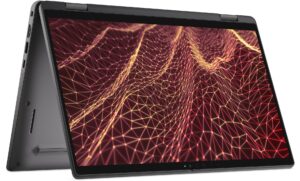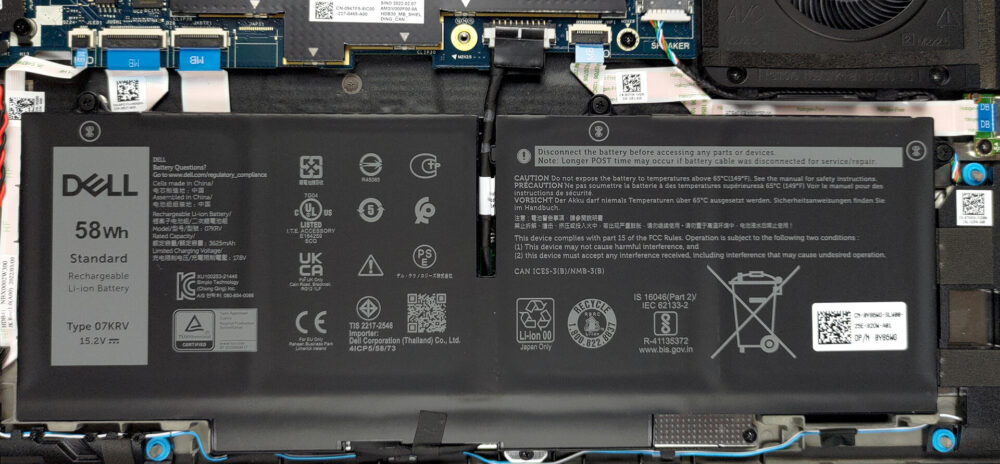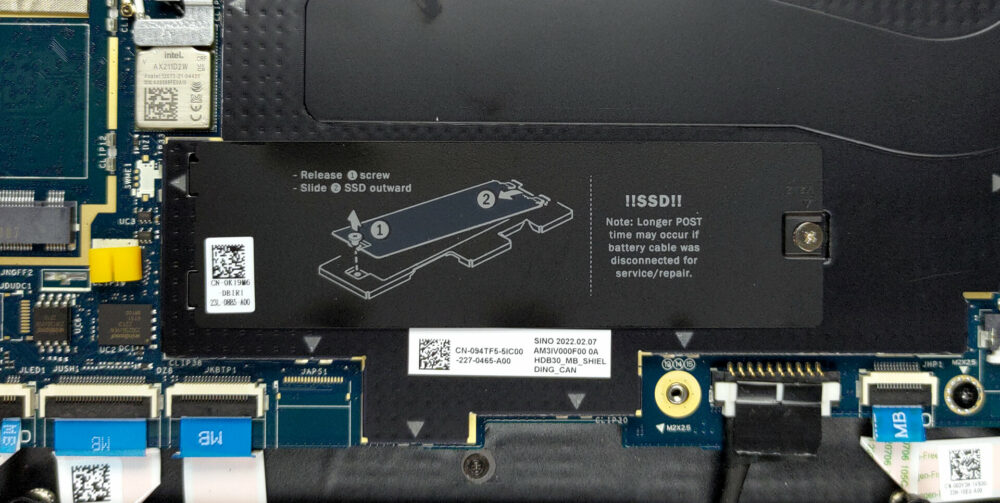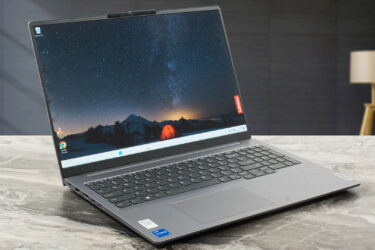Inside Dell Latitude 14 7430 (2-in-1) – disassembly and upgrade options
Integrated memory, and a single M.2 PCIe x4 slot for storage. This is what you should expect inside the Latitude 14 7430 (2-in-1). However, here, you can learn how to open the laptop and see other interesting aspects.
Check out all Dell Latitude 14 7430 (2-in-1) prices and configurations in our Specs System or read more in our In-Depth review.
1. Remove the bottom plate
To access this notebook’s internals, you need to undo 8 captive Phillips-head screws. Then, pry the bottom panel with a plastic tool, preferably starting from the top.
2. Battery
Our device comes equipped with the larger 58Wh battery pack. It lasts for 12 hours and 30 minutes of Web browsing, or more than 8 hours of video playback. To remove it, unplug the battery connector, and undo all three captive Phillips-head screws.
3. Memory and storage
Here, the memory is soldered to the motherboard. The maximum supported size is 32GB of DDR4 for the 15W processors, and LPDDR5 RAM for the 28W ones. Storage-wise, there is one M.2 PCIe x4 slot, which fits Gen 4 drives. You need to remove the special door to access the SSD on this device.
4. Cooling system
This laptop is cooled by a single heat pipe, a side-mounted heat sink, and a fan.
Check out all Dell Latitude 14 7430 (2-in-1) prices and configurations in our Specs System or read more in our In-Depth review.
Dell Latitude 14 7430 (2-in-1) in-depth review
It is getting more and more common to see a convertible business laptop. The reason is very simple - it is far easier to make a presentation or work on a project with multiple people when your device offers a touchscreen and can be used as a tablet.And since tablets have the constraint of space, which makes them generally poor performers, the 2-in-1 notebooks step up to take the scene. In this case, we are talking about Latitude 14 7430 (2-in-1). Quite frankly, it is far from being an affordable device, which leaves high expectations.These expectations are not only for the performance[...]

Pros
- A ton of security software + a human detecting proximity sensor
- Doesn't use aggressive PWM for brightness adjustment (Sharp T6YM4-LQ140M1 (SHP14E2))
- Wi-Fi 6 support, optional 5G connectivity, and an optional Smart Card reader
- Good battery life
- Choice of carbon and aluminum for build materials
- Comfortable keyboard
- Optional fingerprint reader and IR face recognition systems
- Wide I/O, including two Thunderbolt 4 connectors
- Covers 96% of sRGB colors and offers accurate color representation thanks to our Gaming and Web design profile (Sharp T6YM4-LQ140M1 (SHP14E2))
Cons
- Premium price tag
- Needs a better quality control
- Memory is soldered to the motherboard













What on earth are Dell thinking with soldering RAM to the motherboard? An asinine decision if ever there was one. Well, it looks like I’ll be buying a different brand of laptop from a vendor who actually thinks about design and upgradability. Not that Dell will care as they mostly sell their junk into large corporations who don’t consider atrocious design decisions.
Very upsetting this thing about soldering RAM to the motherboard. In the paper max 32 but in reality only 16 GB.
Not sure if we can solder it easily or not at all (please let us know) but if I do I would probably loss 3 years warranty my company took
I would like to add 4T SSD drive, is the bios and machine with this larger size